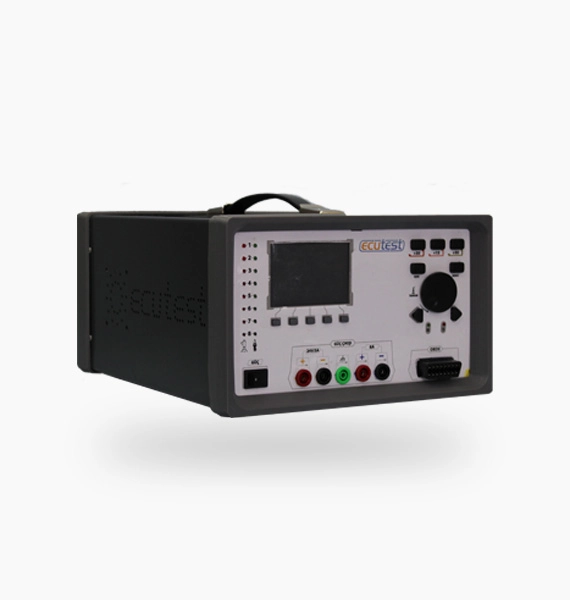Continental SIMOS PCR 2.1 Ecu Repair
Ecu Repair-Ecu Name: Continental SIMOS PCR 2.1
Vehicle Information: Volkswagen GOLF 1.6 TDI-2010
Materials Used: Ecutest Ecu Simulation and Tester, multimeter and soldering iron set
2010 model Volkswagen Golf vehicle came to our garage and it was learned by the customer that the Ecu on the vehicle was defective. First of all, we disassembled the Ecu from the vehicle and took it to the desktop.
A connection was made between the pins of the Continental brand PCR2.1, which belongs to the vehicle, and the Ecutest Ecu Simulation and Test Device on the desktop.
You can make this connection by means of the socket belonging to the PCR2.1 computer or by using the unıversal cable that allows you to connect easily to all the vehicles provided with the ECUTEST device.
We made the connection with our Universal cable and ran the ECUTEST program on our computer. After selecting the car brand and model, our simulation screen was opened.

In the simulation screen, the voltage values to the sensors, the rotation values of the crankshaft and camshaft were checked and it was seen that they were OK.
When the speed of the vehicle was increased and decreased with the help of the RPM button on the simulation screen, when the speed of the injectors was checked, it was seen that the injector numbered 3 gave a red fault warning on the simulation screen and the injector number 3 did not fire on the Ecutest Ecu Simulation and Test Device.
The sensor values on the right side of our simulation screen were checked to see if there were any other malfunctions in the Ecu, and it was determined that it was OK.
Thus, we have determined that only the number 3 injector of the Ecu is defective, other sensors are working without any problems, with the help of the Ecutest Ecu Simulation and Test Device, without a vehicle.
First, with the help of the Ecutest Ecu Simulation and Test Device, the pins belonging to the injector number 3 of the Ecu and the circuit element to which it is connected were detected.
Then, with the help of a multimeter, the paths of the circuit element connected to it were checked and it was found that there was no problem.
When we checked the MOSFET, which is the circuit element to which injector number 3 was connected, we saw with the multimeter that it lost its function and that its legs were short-circuited to each other due to the high current.
The defective circuit element was removed with the help of a soldering iron set and a solid mosfet was installed instead.
When we reconnected the Ecu to the Ecutest Ecu Simulation and Test Device, it was seen on both the simulation screen and the Ecutest Ecu Simulation and Test Device that the problem was solved and that injector number 3 did not give a warning and fired normally.
In this way, the malfunction of the PCR2.1 Ecu on the table without the vehicle was easily resolved with the Ecutest Ecu Simulation and Test Device at the lowest cost and with the exact solution, and the Ecu was delivered to the customer.
